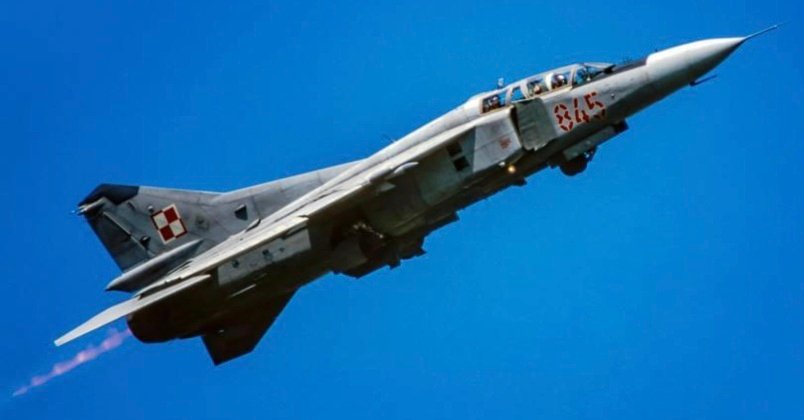<p >The MiG-23 is the most recent and the most capable single engine fighter class developed in Russia, and following its service entry in 1970 the aircraft and its derivatives remained in production for the next 25 years. While initially a troubled fighter which still relied on avionics similar to those of its predecessor the MiG-21, by the late 1970s the MiG-23 had evolved into a highly potent fighter class of which over 2000 were fielded by the Soviet Armed Forces alone. The most capable variants the MiG-23ML and MiG-23MLD boasted fourth generation level avionics, including more powerful radars than NATO’s top single engine fighter the F-16, with <a href=" >Israeli operators</a> who acquired a single airframe through a Syrian defection being highly impressed with its flight performance relative to their F-15s and F-16s.&nbsp;</p><p ><img src=" title="Russian Air Force MiG-23"></p><p >Differences between <a href=" and later variants of the MiG-23 led them to be considered by many experts as almost entirely different aircraft, with performance being revolutionised twice over a period of less than a decade with two major sets of design changes. Integration of new wings, materials, sensors, and weaponry were among the changes. In the hands of experienced pilots, the MiG-23ML/MLD proved capable of going head to head with advanced fourth generation fighters such as the MiG-29 and Su-27 during exercises in the Soviet Union. The MiG-23 was seen to have significant potential for modernisation, with the aircraft used as a testbed for the development of new generations of Soviet air to air missiles, including the active radar guided R-77. With modernisation packages developed for fighters in the 1990s including integration of electronically scanned array radars, which provided far greater power, versatility and jamming resistance, as well as glass cockpits and access to the R-77 and R-73 missiles, the MiG-23 had the potential to retain its position as one of the world’s most capable single engine fighters. Russia would in the 2000s also develop an upgrade package involving integration of the Su-30 fighter’s AL-31 engine onto the aircraft further significantly improve its flight performance and fuel efficiency and extend its range by over one third.&nbsp;</p><p ><img src=" title="MiG-23MLD with R-77 Missiles in Missile Trials in 2000"></p><p >Despite its high potential for modernisation, multiple factors preventing the MiG-23 from fulfilling it and remaining a widely fielded fighter in the fleets of Russia and its defence clients. A key reason was that although the fighter represented the pinnacle of design for a variable swept wing fighter, such aircraft quickly fell out of date due to advances in avionics and aircraft design. Variable swept wings allowed fighters to benefit from optimal aerodynamics at different speeds, with wings swept backwards at high speeds creating a delta-like shape, and brought forwards for a slight slant at lower speeds to improve stability. Wings brought forward also generated more lift to facilitate takeoffs from shorter runways, while a full sweep allowed aircraft to be stored more compactly. A major drawback of variable swept wings, however, was not only their greater weight, but also the high maintenance needs of wing sweep mechanisms which had a negative influence on availability rates and operational costs. This made the MiG-23 appear less cost effective relative to the MiG-29 and F-16 which used newer more efficient wing designs. </p><p ><img src=" title="Prototype MiG-27 with AL-31"></p><p >Digital fly by wire controls using modern computing technologies allowed unstable delta wing designs like the F-16 to be flown with a high level of stability at lower speeds. New generations of engines using turbofan rather than turbojet designs also allowed fighters to take off from much shorter runways even with wings swept back. This made the heavy and maintenance intensive variable swept wing design appear redundant, and ultimately prevented the MiG-23 from remaining cost effective compared to the newer MiG-29. The disintegration of the Soviet Union and subsequent near collapse of the Russian economy and defence sector resulted in the retirement of the MiG-23 fleet decades ahead of schedule, and brought an end to multiple programs to develop new generations of single engine fighters. The MiG-23’s retirement thus left Russia as the only leading producer of combat jets without single engine fighters in its fleet, with the twin engine <a href=" target="_blank">Su-27 and MiG-29</a> and their derivatives forming almost the entire fighter fleet and accounting for almost all fighter production for the next three decades.&nbsp;</p>
Expensive Wings Killed Russia’s Last Single Engine Fighter: Why the MiG-23 Was Phased Out

